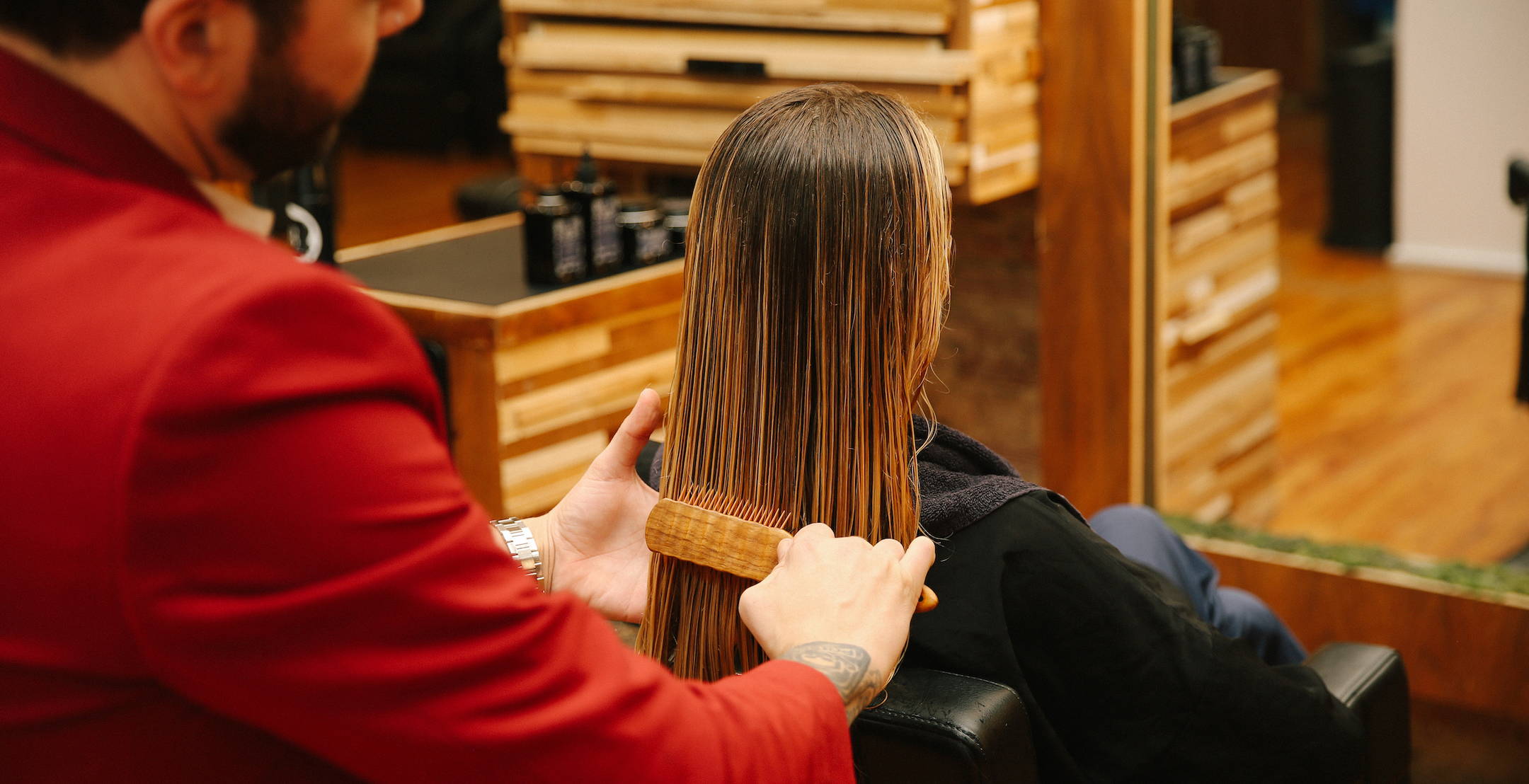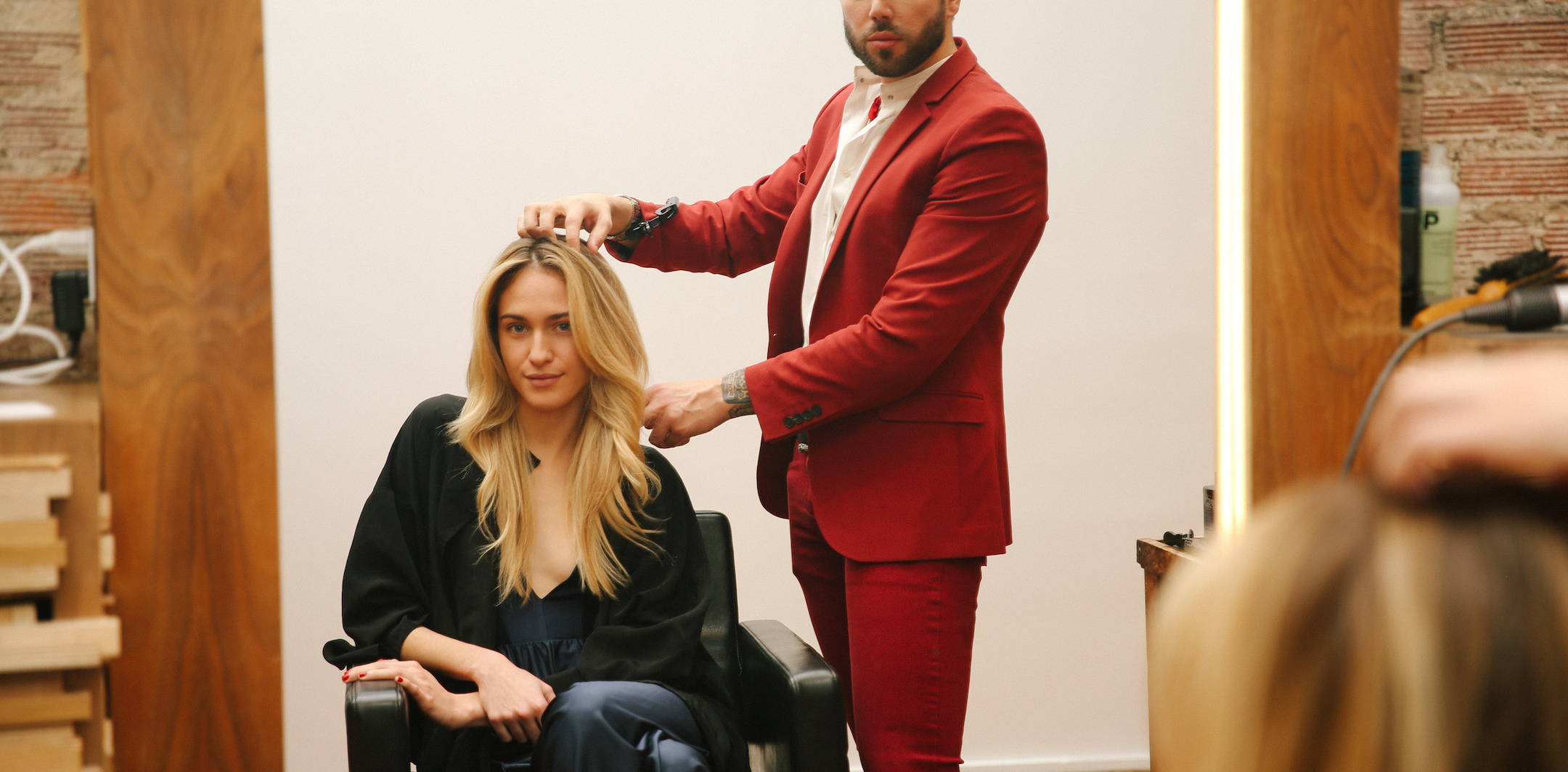Free Carbon Neutral Shipping On Orders $75+, Plus Free Samples!
Buy Now and Pay Later in 4-interest free installments with Klarna
There’s nothing more frustrating than fighting frizzy, frayed hair. Especially when you follow all the hair care steps, buy all the products—and yet, it’s the harsh reality so many of us face, either now, or certainly at some point in the future. More often than not, the culprit is the dreaded ‘s’ word, split ends.
Split ends are a common nuisance caused by various external factors and inadequate hair care practices. It’s important to understand how to prevent them, given the inevitability of them occurring. Maintaining a healthy head of hair plays such a crucial role in our overall appearance, and similarly, self-confidence. But it requires more than just regular washing and styling. We’re here to help uncover the mystery beyond the annoyance of split ends, so even if you have them, you’ll know how to treat them and avoid them in the future.
To truly manage your hair’s health, it's essential to understand its structure. Let’s start with the basics. Hair is composed of three layers: the medulla, cortex and cuticle. The outermost layer, the cuticle, serves as a protective barrier for the inner layers. Healthy hair cuticles lie flat and smooth, reflecting light and giving the hair its shine. However, when the cuticle (that important outer layer) is damaged, the inner cortex is exposed, causing the hair to become dull and prone to issues like split ends.
Split ends occur when the protective cuticle layer of the hair is damaged or stripped away, causing the hair strand to split, or fray, into two or more sections. A number of factors contribute to split ends including excessive heat styling, chemical treatments like hair coloring, harsh brushing and exposure to environmental stressors.
Split ends not only make the hair look frizzy and unkempt, but can also hinder hair growth. It’s crucial to take the necessary steps to prevent them from further damaging your hair, because once a hair strand splits, it will continue to split all the way up the hair shaft until it hits the root. That’s when it can cause significant breakage and damage—making those strands significantly shorter than the others. Though some amount of split ends is inevitable, an excessive amount throughout your hair can be much more of a nuisance, so prevention is key.

Identifying split ends is fairly simple to do. Odds are you’ve already spotted them on your own head. But in case you haven’t, here’s a few indicators and tips.
Take a small section of your hair and examine the tips closely. If you notice the hair strand has split into two or more sections, resembling a "Y" or "V" shape, congratulations (or maybe, apologies is more appropriate), you've identified split ends. Under a microscope, those damaged strands look like fractured wood with multiple fibers sticking out, but to the plain eye, they look exactly like how they sound—ends that are split or frayed in some way.
Running your fingers gently along the length of your hair strand, starting from the roots to the ends, can also help determine whether or not you’re suffering from split ends. If you feel roughness or a noticeable change in texture as you move toward the tips, it's likely that split ends are present.
If your hair doesn't seem as smooth and polished as usual, or if it’s difficult to style, or even detangle, it could be due to split ends. They can often cause the hair to look frizzy, unruly and unkempt—all the things we hair enthusiasts try so hard to avoid.
Gently stretch a strand of your hair when it's dry. Healthy hair should have some elasticity to it and bounce back when released. Hair with split ends may snap or break easily without stretching.

Those dreaded split end nuisances emerge as a result of various underlying culprits that compromise the structural integrity of our precious locks. The good news is, most of them are avoidable. Here’s the golden rule: Everything in moderation. Whether it’s styling, heating, dyeing or what have you, never overdo it, or be prepared to pay the (split ends) price. Here are some of the top contributing factors. To understand them, is to effectively avoid split ends in the future.
Many of us turn to high-temperature styling tools to get our hair looking its best—from blow dryers to flat irons to curling wands and more. But the regular use of these types of tools is also one of the main culprits behind split ends. While effective at helping us achieve the look we want, heat styling tools can wreak havoc on our hair’s health. The tips of the hair are the most fragile, so it’s vital to use heating tools on the midsection of hair only, and never on the ends.
It should come as no surprise that chemical treatments, such as hair coloring, bleaching and perming, can dramatically alter the structure of your hair. These processes involve the use of strong chemicals that break down the protein bonds within the hair shaft. This weakening of the protein structure not only makes the hair more fragile but also compromises the integrity of the cuticle layer, which means—you guessed it, your hair is more prone to split ends.
Proper hydration is essential for maintaining healthy, split-end-free hair. When your hair lacks moisture, it becomes dry, brittle and more prone to damage. Over-washing your hair or using harsh shampoos can strip away the natural oils that keep your hair hydrated. And remember, different types of hair require different products. Curly-haired girls may need added treatments or products that those with long hair, oily hair, etc. may not.
The way you handle your hair also plays a significant role in its overall health. Roughly brushing or combing wet hair can cause excessive friction and stress on the hair shaft, which weakens the cuticle layer and can lead to splitting. Even sleeping on an abrasive pillowcase can be problematic as it can cause damage to the hair cuticle, versus something softer like a silk pillowcase. You may not realize these sorts of things matter for hair health, but we assure you, they do.
External environmental factors can also take a toll on your hair health. Exposure to pollution, extreme weather conditions and ultraviolet (UV) radiation can lead to oxidative stress and damage the cuticle layer. The same way we protect our skin, make sure you are protecting your hair, too.
Like so many aspects of our lives, hair health is closely linked to overall well-being, and diet plays a crucial role. A lack of essential nutrients, particularly protein, vitamins and minerals, can weaken your hair's structure and contribute to split ends. Maintaining a diet rich in these essential nutrients is not only good for your body, but will also help keep your hair healthy and strong.
Sadly, there is no cure for split ends, but there are prevention and treatment options. In the end, however, the only way to eliminate split ends entirely is to get your hair cut or trimmed. By trimming your hair, you’re able to prevent your hair from splitting further up the strand and avoiding further damage.
By adopting a thoughtful and proactive approach to hair care, you can not only manage existing split ends but also minimize their occurrence in the future. Here are a few tried-and-true ways to maintain the vitality and beauty of your hair.
Once an end is split, there is no healing it. The ends are dead, and cannot regenerate. That said, we can repair those split ends, and we can certainly prevent them from future breakage. Repair the affected area by applying special hydrating products containing oils or polymers. They create a kind of coating to keep the split parts together and make them look smooth and even shiny. But this split end repair will last only until the next shampoo, and it won’t be able to stop the breakage progression without extra efforts.

Like we said, scheduled hair trims are your first line of defense—and the only true treatment—against split ends. Especially if you have long hair, regular trims are imperative for the health of your hair. Aim to trim your hair every six to eight weeks to remove the damaged tips and prevent splits from traveling further up the hair shaft.
When using heat styling tools, it’s imperative to apply a heat protectant spray or serum beforehand. This barrier minimizes the impact of high temperatures on your hair's cuticle, reducing the risk of split ends.
A high-quality conditioner—that suits your particular hair type—is a worthy investment when it comes to hair care. Conditioning after shampooing helps to lock in moisture, improving your hair's texture and reducing the likelihood of split ends.
It’s also important to add deep conditioning treatments and hair masks into your routine once a week. These intensive treatments provide your hair with extra hydration, nourishment and repair.
Five words: Treat your hair with care. This is especially true when it's wet. Use a wide-tooth comb to detangle, starting from the tips and gradually working your way up until your comb glides easily through your hair. Avoid aggressive brushing or tugging, as wet hair is more prone to breakage.

There are ways to prevent split ends, and then there are ways to treat them—or rather, disguise them. Because remember, once they’re split, they’re split. There is no avoiding them. All you can do is deal with what’s already occurred.
While prevention is the best approach, if you already have split ends, trimming is your best, and really only option. Regular trims remove the damaged portions, preventing splits from progressing and making your hair appear healthier. The longer you go in between salon appointments, the more likely you are to cause further damage, so bite the bullet and regularly eradicate those bad boys.
Consider using moisturizing hair masks or deep conditioners to infuse your hair with essential hydration. These treatments help to repair the cuticle layer and improve the overall health of your hair.
Applying natural oils like coconut oil, argan oil or jojoba oil to the ends of your hair can provide a temporary fix for split ends. These oils help to smooth the cuticle, reducing frizz and improving the appearance of splits. Coconut oil in particular goes deep into the hair shaft to condition it, and applying argan oil as a leave-in conditioner helps retain moisture while keeping a light texture that won’t weigh your hair down.
On days when you're giving your hair a break from heat styling, embrace protective hairstyles like buns or twists that effectively shield your ends from external stressors and friction.
No one wakes up one day and thinks, I sure hope I develop split ends today. But the reality is, they happen. Understanding the how and why, and alternatively, the ways to prevent and treat them is your best course of action. Your hair deserves the best TLC available, and we hope these prevention tactics will help you reach your hair health goals. There’s also a number of at-home hair tips and remedies, directly from our very own experts, to assist you, and as always, our stylists are available, should you need them.
by Morgan Hanson, featured contributor
Laisser un commentaire
Les commentaires sont approuvés avant leur publication.